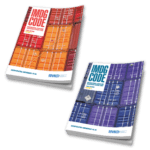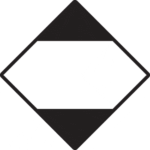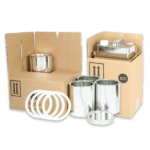
Shipping Limited Quantities by Sea
Shipping Limited Quantities doesn’t have to be confusing. The regulations are pretty straight forward as long as you know where to find them. A while back I wrote an article comparing Limited Quantity shipment requirements by ground and air. But what about shipments by sea?
The requirements for Limited Quantity shipments by sea share some similarities with both ground and air shipments as you will see below but doesn’t fully align with either.
General Information on Limited Quantities
To obtain most of the information you will need to ship Limited Quantities by Sea, you must go to section 3.4 in The IMDG Code. This is where you will find information on packaging, labeling, placarding, and segregation of Limited Quantities. In terms of inner packaging amounts, this would be found in the dangerous goods list at column 7a in chapter 3.2 of the IMDG code. For example, for UN 1993 PG II, in column 7a it says 1L, which means each inner packaging cannot exceed 1 liter when shipping as a Limited Quantity. Generally speaking, the total gross mass of the package cannot exceed 30 KG per IMDG 3.4.2.1.
Packaging
When shipping in Limited Quantities per IMDG code, UN Specification packaging is not a requirement. The packaging just has to meet the conditions of 4.1.1.1, 4.1.1.2 and 4.1.1.4 through 4.1.1.8, which in a nutshell means it has to be a good strong quality packaging and must be compatible with your dangerous goods among some other requirements. The configuration must be a combination packaging which would include inner packaging inside of a strong outer packaging. Unlike IATA, The IMDG code doesn’t mention the requirement of a Limited Quantity packaging passing a drop and stack test.
Package markings and Shippers Declarations
Marking a Limited Quantity shipment by Sea is pretty easy, the only requirement is the Limited Quantity label on your packages and for cargo transport units (CTU), a Limited Quantity placard if it only contains Limited Quantity materials per 3.4.5.5.2. In addition, orientation labels are required per 5.2.1.7 if you are shipping liquids. This means that hazard class labels or marine pollutant markings for example are not required. This differs from IATA which requires hazard class labels in addition to the Limited Quantity marking but falls in line with both the 49CFR and TDG which also don’t require hazard class labels for these shipments. Just like when shipping Limited Quantities by air per IATA, a shipper’s declaration is required when shipping by sea, which means you must list your materials full shipping description and supplement it with the words “Limited Quantity” or the letters “LTD QTY” on the document per IMDG 3.4.6.1. A shipper’s declaration is not required when shipping Limited Quantities by ground which is one of the main differences between shipping by ground and sea in this case. Whether you decide to ship Limited Quantities by sea, or decide a different mode of transport, our team of experts is just a call away for our customers at 855.734.5469 or send us an email, we’re happy to help!
Stay up to date and sign up for our newsletter!
We have all the products, services, and training you need to ensure your staff is properly trained and informed.
 IMDG Publications IMDG Publications |
 Limited Quantity Label Limited Quantity Label |
 Metal Shipping Kits Metal Shipping Kits |






 ICC USA
ICC USA ICC Canada
ICC Canada